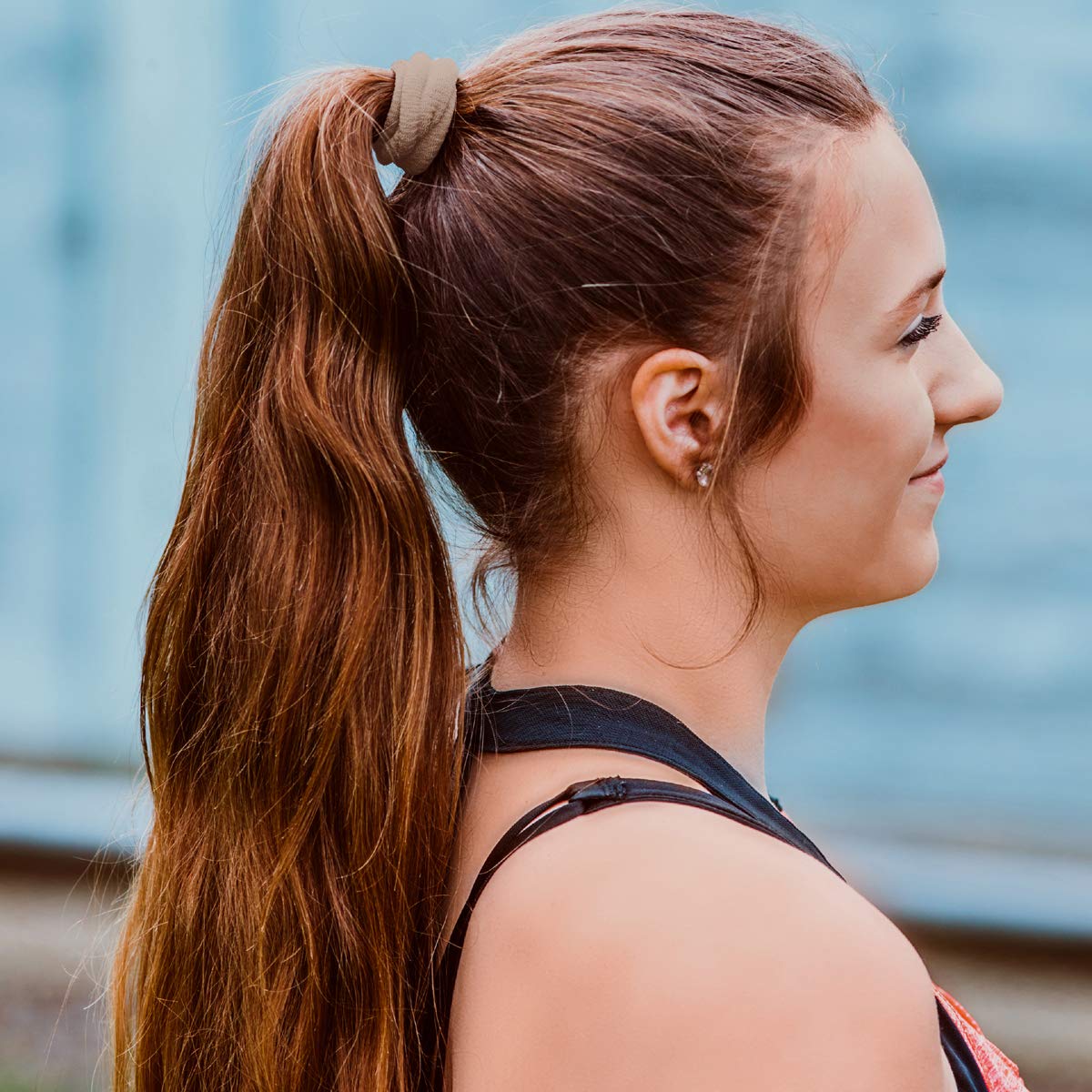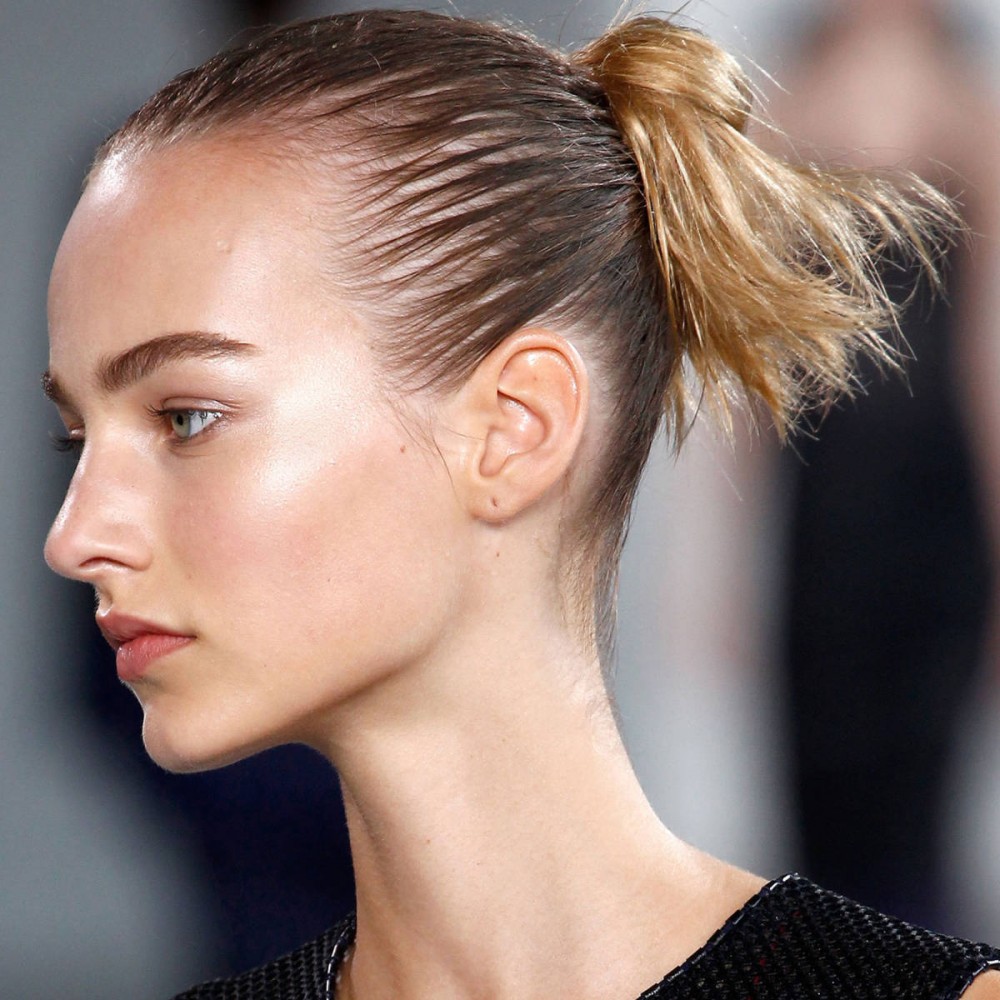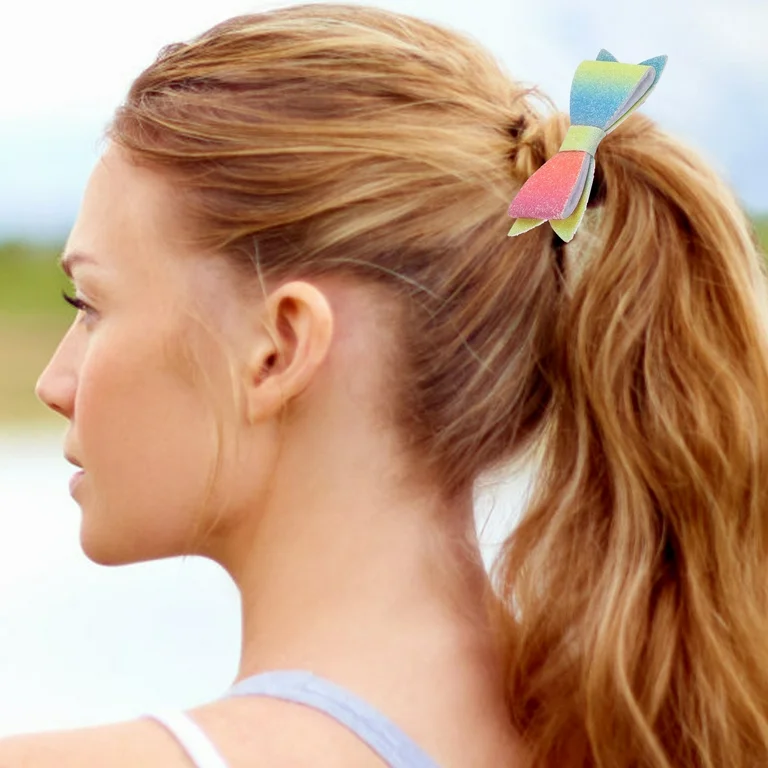
Long Hair Tie: Mastering Mane Management
Understanding the Long Hair Tie Revolution
Long hair ties have revolutionized the way people manage and style their lengthy locks. These versatile accessories offer a plethora of options for those blessed with abundant tresses. Unlike traditional hair elastics, long hair ties provide extra length and flexibility, allowing for more secure and comfortable hairstyles. They come in various materials, colors, and designs, catering to diverse preferences and hair types.
From casual everyday looks to elegant updos, long hair ties prove indispensable in any hair care arsenal. The popularity of these accessories has soared in recent years, with influencers and celebrities showcasing creative ways to incorporate them into their hairstyles. Long hair ties not only serve a functional purpose but also act as fashionable statement pieces. They can seamlessly blend with the hair or stand out as bold accents, depending on personal style choices.
Additionally, the extra length of these ties makes them suitable for thick, voluminous hair that often proves challenging to manage with standard elastics. As more people embrace natural hair textures and longer lengths, the demand for effective and stylish hair management solutions continues to grow. Long hair ties meet this need by offering a comfortable, versatile, and attractive option for taming unruly manes.

The Evolution of Hair Ties: From Basic Bands to Long Luxuries
The journey of hair ties spans centuries, evolving from simple utilitarian tools to fashion-forward accessories. Ancient civilizations used strips of leather or cloth to secure their hair, prioritizing function over style. As societies progressed, so did hair accessories, with ornate combs and pins gaining popularity among the elite. The modern elastic hair tie emerged in the 20th century, revolutionizing hair management with its stretchy, durable properties. However, these early elastics often caused damage, especially to long or thick hair.
The advent of long hair ties marks a significant milestone in this evolution. Designed to address the limitations of traditional elastics, these extended versions offer gentler hair control without sacrificing hold. The development of new materials has played a crucial role in this progression. Silk and satin-covered elastics reduce friction and prevent breakage, while innovative synthetic blends provide superior stretch and recovery.
Furthermore, the incorporation of decorative elements has transformed long hair ties into fashionable accessories in their own right. From subtle, sophisticated designs to bold, eye-catching patterns, these ties cater to a wide range of aesthetic preferences. The evolution continues as manufacturers explore eco-friendly materials and production methods, responding to growing environmental concerns. This ongoing development ensures that long hair ties remain at the forefront of both functionality and style in hair care.
Types of Long Hair Ties: A Comprehensive Overview
The world of long hair ties offers a diverse array of options to suit various hair types, styles, and occasions. Ribbon hair ties stand out for their gentle hold and elegant appearance. These ties, often made from silk or satin, minimize friction and reduce the risk of hair breakage. They come in various lengths and widths, allowing for different styling options. Scrunchies, another popular type, feature a fabric-covered elastic band. The extra material provides a softer grip and adds a fun, retro flair to any hairstyle. Long scrunchies offer even more versatility, allowing for multiple wraps or bow-like arrangements.
Coil hair ties, also known as telephone cord hair ties, have gained popularity for their ability to hold hair securely without leaving creases. Their spiral shape distributes pressure evenly, reducing hair damage. Bungee hair ties consist of a stretchy cord with hooks on each end, offering a customizable fit for thick or thin hair. These ties excel at creating tight ponytails and buns without slipping. Fabric-covered elastic ties provide a happy medium between traditional elastics and gentler alternatives. They offer strong hold while minimizing damage. Lastly, decorative long hair ties featuring beads, charms, or intricate designs serve both functional and aesthetic purposes. Each type of long hair tie presents unique advantages, catering to different needs and preferences in hair management.

Choosing the Right Long Hair Tie for Your Hair Type
Selecting the appropriate long hair tie is crucial for maintaining hair health and achieving desired styles. For fine or thin hair, lightweight options like silk ribbon ties or thin fabric-covered elastics work best. These ties provide gentle hold without weighing down delicate strands. Conversely, thick or coarse hair benefits from sturdier options such as wide fabric-covered elastics or bungee ties. These can securely hold voluminous locks without constant readjustment.
Those with curly or textured hair should opt for snag-free alternatives like satin scrunchies or coil ties. These minimize friction and prevent tangling, preserving curl patterns. For individuals prone to headaches, looser options like oversized scrunchies or ribbon ties offer comfort without sacrificing style. Hair length also plays a role in selection. Extra-long hair may require ties with greater elasticity or length to accommodate voluminous styles.
Those with layered cuts might prefer ties that can securely hold shorter pieces, such as bungee ties or textured fabric options. Consider the hair’s texture when wet; some ties grip better on damp hair, while others are ideal for dry styling. Additionally, those with color-treated hair should choose gentle, non-abrasive ties to prevent color fading and damage. By matching the long hair tie to specific hair characteristics, individuals can ensure comfortable, effective, and hair-friendly styling options.
Styling Techniques: Mastering Long Hair Tie Artistry
Long hair ties open up a world of styling possibilities, from simple everyday looks to elaborate formal updos. For a basic ponytail with extra flair, wrap a ribbon tie around the base multiple times, leaving the ends to cascade with the hair. This technique adds elegance to a casual style. To create a secure bun, use a bungee tie to gather the hair, then twist and wrap it around the base. Secure the ends with the bungee hooks for a polished look. For a bohemian vibe, try a half-up style using a decorative long tie.
Gather the top section of hair, secure it with the tie, then braid or twist the tie’s ends into the loose hair. Braided styles benefit from long ties as well. Use a tie at the end of a traditional braid, or incorporate it into a French or Dutch braid for added texture and color. For special occasions, create a low chignon by gathering hair at the nape of the neck, twisting it into a bun, and securing it with a long tie.
Wrap the tie’s ends around the bun for a seamless finish. Experiment with multi-sectioned styles by using several long ties in coordinating colors. This technique works well for updos or intricate braided looks. Remember to adjust the tension of the tie to prevent headaches and damage. With practice, these styling techniques can elevate everyday looks and provide stunning options for special events.

Maintenance and Care: Prolonging the Life of Your Long Hair Ties
Proper care and maintenance of long hair ties ensure their longevity and continued effectiveness. Start by establishing a regular cleaning routine. For fabric-based ties like scrunchies or ribbon ties, hand wash them in cool water with mild detergent. Gently squeeze out excess water and lay flat to dry. This process removes buildup of hair products, oils, and sweat that can degrade the material over time.
Elastic-based ties benefit from occasional soaking in a mixture of warm water and gentle shampoo to restore elasticity. After cleaning, store long hair ties properly to maintain their shape and prevent tangling. A dedicated drawer or hanging organizer keeps them easily accessible and free from dust. For travel, consider a small pouch or case to protect ties from damage. Rotate your collection of ties regularly to prevent overuse of a single item, which can lead to stretching or wear.
Inspect ties periodically for signs of wear such as fraying edges or loosened elastics. Discard any damaged ties to prevent potential hair breakage. When removing ties, do so carefully to avoid pulling or snagging hair. Unwind wrapped styles gently rather than pulling the tie out in one motion. For elastic ties, stretch them before each use to maintain elasticity. By implementing these care practices, you can extend the life of your long hair ties, ensuring they remain effective and attractive accessories for your hair styling needs.
Health Considerations: Balancing Style and Hair Wellness
While long hair ties offer numerous styling benefits, it’s crucial to consider their impact on hair and scalp health. Consistently tight hairstyles can lead to traction alopecia, a form of hair loss caused by prolonged tension. To prevent this, vary your hairstyles and the placement of ties to distribute pressure evenly across the scalp. Opt for looser styles when possible, especially for extended wear. The material of the tie also affects hair health.
Rough or abrasive materials can cause friction, leading to breakage and split ends. Choose smooth, hair-friendly materials like silk or satin to minimize damage. Be mindful of any metal components on decorative ties, as these can snag or cut into hair strands. Consider using protective styles or techniques when utilizing ties with potential snag hazards. Hygiene plays a crucial role in hair and scalp health. Regularly clean your hair ties to prevent the buildup of bacteria, which can lead to scalp irritation or infection.
If you experience any scalp discomfort, redness, or unusual hair loss, reassess your hair tie usage and consult a dermatologist if symptoms persist. For those with sensitive scalps, explore alternative styling methods that reduce reliance on ties, such as claw clips or hair sticks. By prioritizing hair health alongside style, you can enjoy the versatility of long hair ties without compromising the integrity of your locks.
Fashion Forward: Incorporating Long Hair Ties into Your Style
Long hair ties have transcended their utilitarian origins to become fashion statements in their own right. These versatile accessories can complement and elevate various style aesthetics. For a bohemian look, opt for long ribbon ties in earthy tones or floral prints. Braid them into your hair or let them hang loose for a carefree vibe. In professional settings, sleek fabric-covered elastics in neutral colors offer a polished appearance. Coordinate the tie color with your outfit for a cohesive look.
For special occasions, choose long hair ties adorned with pearls, rhinestones, or metallic accents. These can add a touch of glamour to updos or half-up styles. Seasonal trends can be incorporated through color choices; opt for pastels in spring, vibrant hues in summer, rich tones in autumn, and festive metallics in winter. Some fashion-forward individuals use long hair ties as accessories beyond hair styling.
For instance, wrapping a decorative tie around a handbag handle or using it as a choker necklace showcases creativity. Layering multiple ties in complementary colors creates depth and interest in hairstyles. Consider the overall balance of your outfit when selecting a hair tie. A subtle tie works well with bold clothing, while a statement tie can enliven a simple ensemble. By treating long hair ties as integral parts of your fashion repertoire, you can express personal style while keeping your hair beautifully managed.

DIY Delights: Creating Custom Long Hair Ties
For those seeking unique or personalized options, creating DIY long hair ties offers a fun and rewarding project. Start with a base material such as elastic cord, ribbon, or stretchy fabric. Measure the desired length, typically 18-24 inches for versatility. For fabric ties, cut a strip twice the desired width and fold it in half lengthwise, wrong sides together. Sew along the open edge and turn the tube right side out. Insert elastic if desired, then sew the ends closed. Ribbon ties can be customized by adding lace edges or embroidery. Use fabric glue to attach small embellishments like beads or buttons for extra flair. For a no-sew option, braid three strands of elastic cord together, securing the ends with clear elastic bands.
Experiment with different textures by combining materials, such as intertwining ribbon with thin elastic strands. Create ombre effects on fabric ties using fabric dye, following a gradient technique. Personalize ties with fabric paint or iron-on transfers featuring names or motivational quotes. For an eco-friendly option, upcycle old t-shirts or scarves into soft, stretchy ties. The possibilities for customization are endless, allowing for truly unique hair accessories that reflect personal style and creativity. DIY long hair ties also make thoughtful, personalized gifts for friends and family members with long hair.
The Future of Long Hair Ties: Innovations and Trends
The world of long hair ties continues to evolve, with exciting innovations on the horizon. Smart hair ties incorporating technology are emerging, featuring elements like built-in activity trackers or UV sensors to monitor sun exposure. Biodegradable materials are gaining traction, addressing environmental concerns associated with traditional synthetic ties. These eco-friendly options decompose naturally, reducing plastic waste.
Innovations in fabric technology may lead to ties with enhanced properties such as moisture-wicking or temperature-regulating capabilities. This could provide added comfort for active individuals or those in varying climates. Customization is likely to become more accessible, with 3D-printed ties offering unique designs tailored to individual preferences. The integration of aromatherapy into hair ties, featuring scented materials or essential oil-infused fabrics, could provide sensory benefits alongside functionality.
As the line between fashion and function continues to blur, we may see collaborations between hair tie manufacturers and high-end fashion designers, elevating these accessories to luxury status. Advancements in ergonomic design could result in ties that distribute tension more evenly, further reducing the risk of hair damage and headaches. The future may also bring multi-functional ties that can transform from hair accessories to bracelets or necklaces, catering to the versatility demanded by modern consumers. As awareness of hair health grows, expect to see more ties designed specifically for different hair textures and types, offering tailored solutions for diverse hair care needs.

